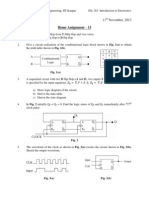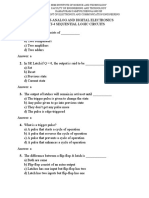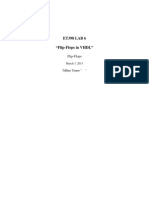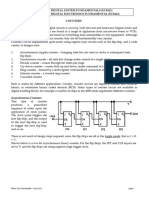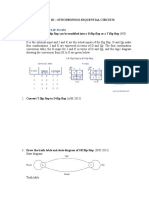0% found this document useful (0 votes)
402 views3 pagesECE590 - Tutorial 6 (UiTM)
This document contains 10 questions about digital logic circuits and flip-flops. The questions ask the reader to determine output waveforms for various flip-flop configurations, design counters to produce specific sequences, and analyze counter circuits. Diagrams and figures are provided to illustrate the circuit configurations being asked about.
Uploaded by
NazhammerheartCopyright
© Attribution Non-Commercial (BY-NC)
We take content rights seriously. If you suspect this is your content, claim it here.
Available Formats
Download as PDF, TXT or read online on Scribd
0% found this document useful (0 votes)
402 views3 pagesECE590 - Tutorial 6 (UiTM)
This document contains 10 questions about digital logic circuits and flip-flops. The questions ask the reader to determine output waveforms for various flip-flop configurations, design counters to produce specific sequences, and analyze counter circuits. Diagrams and figures are provided to illustrate the circuit configurations being asked about.
Uploaded by
NazhammerheartCopyright
© Attribution Non-Commercial (BY-NC)
We take content rights seriously. If you suspect this is your content, claim it here.
Available Formats
Download as PDF, TXT or read online on Scribd
/ 3



